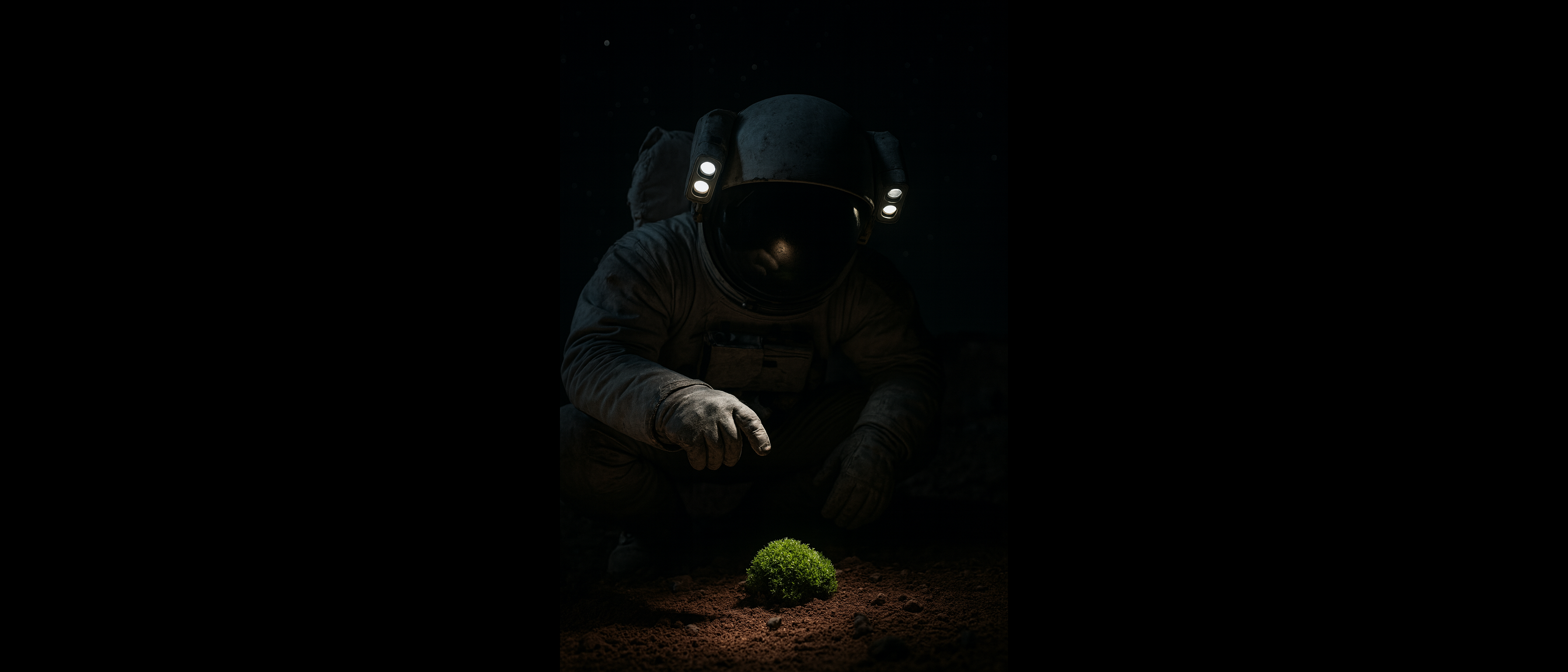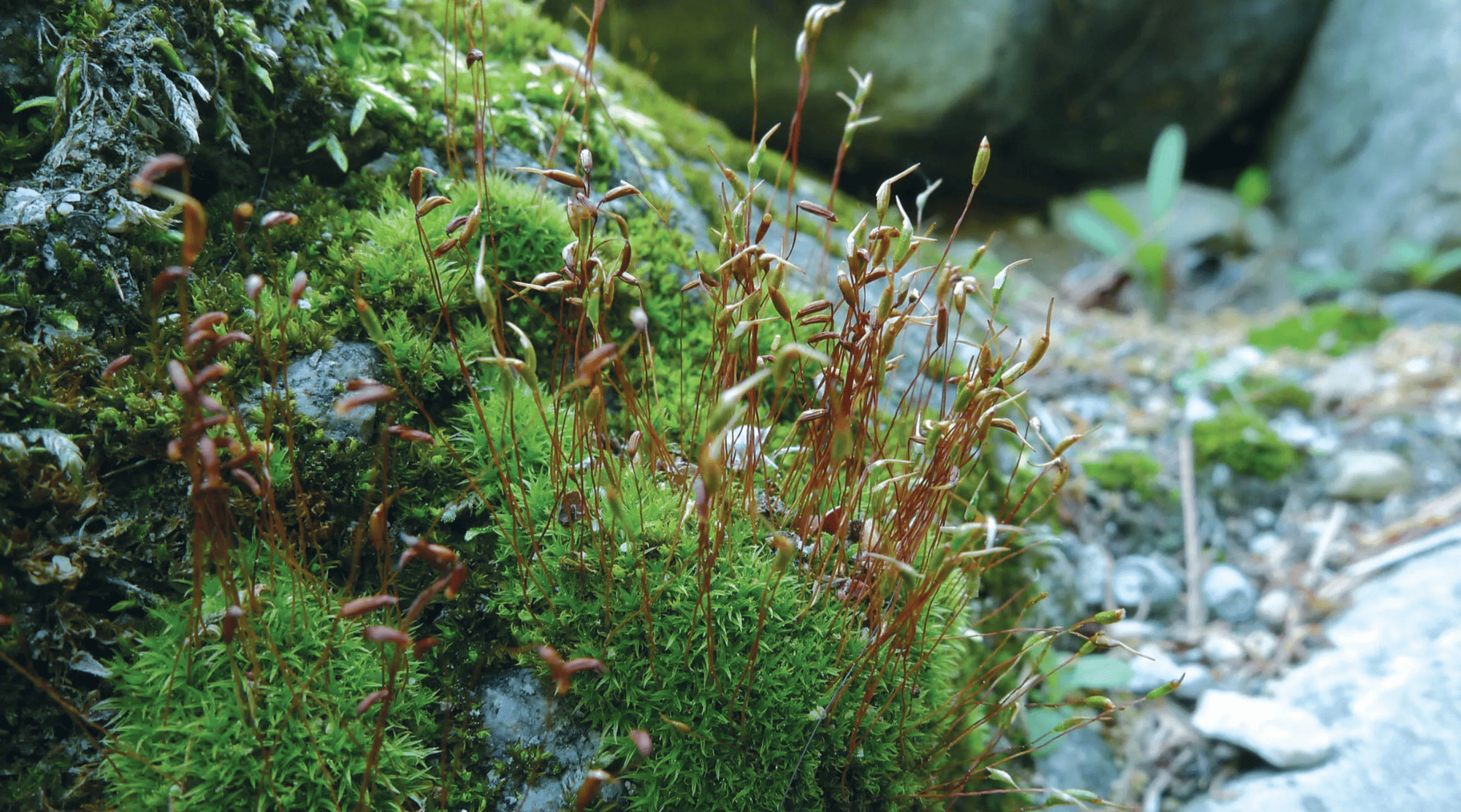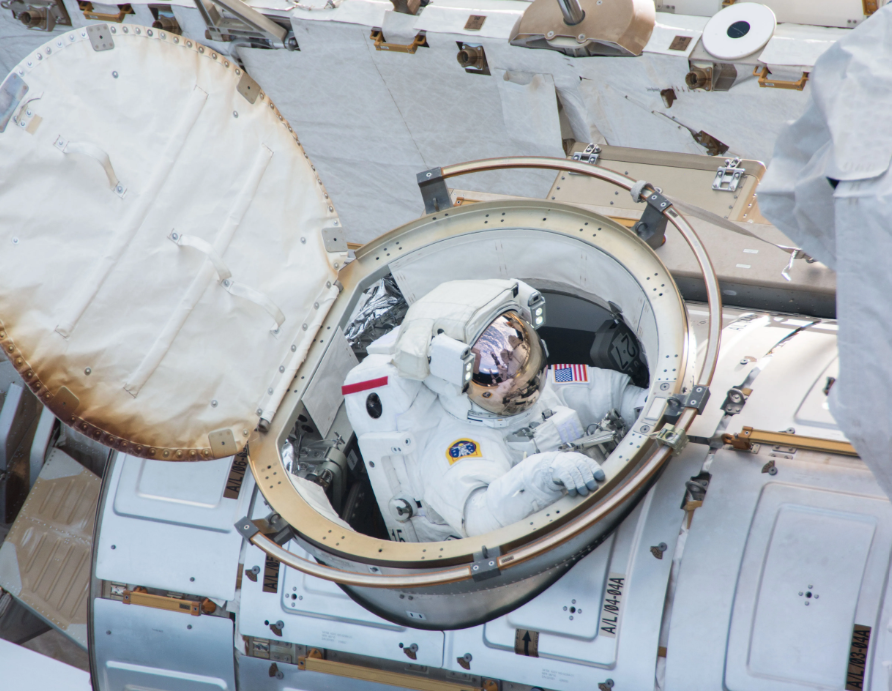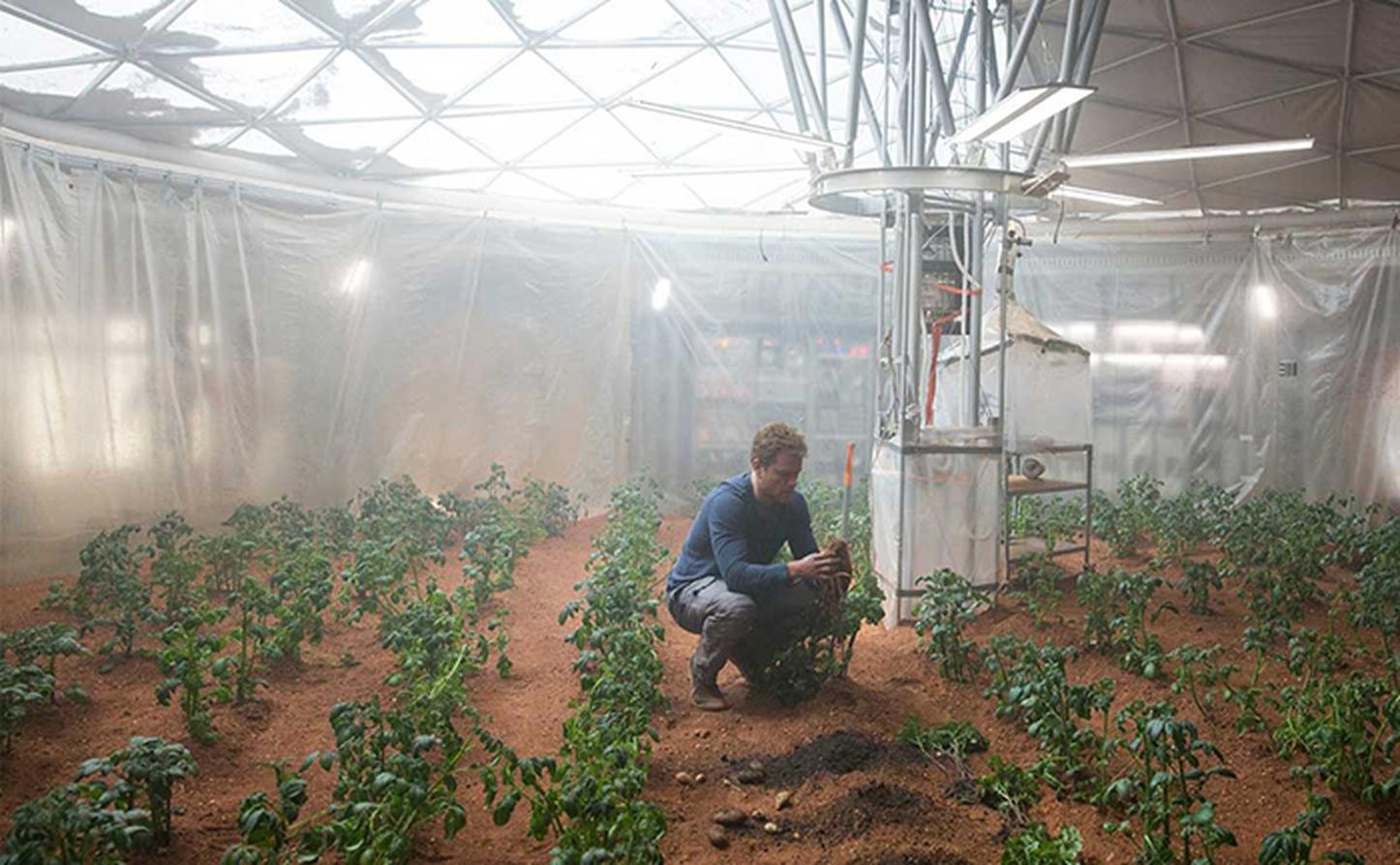“It was right after I graduated high school and started farming. One day, I noticed moss growing on the roof of our house. Even under the blazing sun, it was quietly and firmly thriving. For me, that small sight left a surprisingly deep impression.”- Jaehong Park, CEO of Code of Nature
I had always thought moss only grew in damp and shaded places. But there it was, enduring the heat of the midday sun, holding its ground in silence.“Maybe what I thought I knew about nature was only half the story.”
From that day on, COFN began to see moss in a new light. A plant we had passed by without notice suddenly felt like something more. What if recovery doesn’t begin with the loud and the large, but with something small, persistent and resilient? That is how moss became the starting point of Code of Nature’s journey toward ecological restoration.

As we began to see moss with new eyes, we soon encountered a remarkable truth: moss is among the first plants to ever appear on land. When thinking of Earth’s early history, most people imagine the Jurassic or Cretaceous periods. But there is a much earlier time called the Precambrian era, when even the concept of nature barely existed. There were no forests, no grasses, and not even soil as we know it.During this barren time, the first lifeforms made their way onto land. They were part of a group of plants known as bryophytes, the ancestors of modern mosses. These plants had no roots or vascular systems, but they were the first to adapt to life on land. They made the beginning of ecosystems possible. Moss is not just an ancient plant. It was the key that opened the door to life on land.

출처 ⓒ 국립생물자원관_한반도의 생물다양성 [지붕빨간이끼]
Moss is typically only 1 to 10 centimeters tall, but within its small form lies a survival strategy that has endured for hundreds of millions of years. Moss can live without putting down roots. It survives using only the moisture it absorbs, which powers its photosynthesis and metabolism. This is why it can thrive even in places without soil. While moss usually prefers cool and shaded environments, it can also survive in much harsher conditions. At the heart of this resilience is a physiological trait called Desiccation tolerance*. Thanks to this ability, moss has been found surviving under Antarctic ice, between rocks in deserts, and even in outer space during scientific experiments.

실험 ‘아르테모스’의 로고, 출처 ⓒ NASA
지난 2024년 11월, 미국 항공 우주국(NASA)은 새로운 우주 실험을 진행했습니다. 남극에서 채집한 이끼 지붕빨간이끼(Ceratodon Purpureus,일명 ANT1)를 방사선과 무중력 환경에 노출시키는 실험이었죠.
실험의 이름은 바로 ‘ARTEMOSS’입니다.

페트리 접시에 놓여 있는 이끼 실험군들, 출처 ⓒ NASA
Organic acid : Compounds that contain carbon and have acidic properties, secreted by moss to break down rock surfaces
1. 이끼를 작은 페트리 접시에 배양한 뒤, NASA의 우주 방사선 연구소(*NSRL)에서 고에너지 이온 빔에 먼저 노출시킵니다.
2. 일부는 지상에서 분석하고, 나머지는 냉장 상태로 포장해 우주로 보냅니다.
3. 국제우주정거장(ISS)에 도착하면, 무중력 상태에서 일정 기간 성장을 지켜봅니다.
4. 이후 이끼는 초저온(-150℃)으로 급속 냉동된 뒤, 특별 냉동 장치(MELFI)에 보관되어 지구로 귀환합니다.
이러한 실험 과정을 통해 연구진은 우주 방사선과 미세 중력이 식물에 어떤 영향을 주는 지를 관찰할 수 있었습니다.
그렇다면, 지구에서 이미 뛰어난 내성을 보여줬던 이끼는 우주에서도 살아남았을까요?
*NSRL = Nasa Space Radiation Laboratory 브룩헤이븐 연구소(BNL) 내에 위치한 연구 시설로, 우주 방사선 환경을 지상에서 인공적으로 재현 실험하는 곳 (우주에서 실제 발생하는 방사선을 모사한 고에너지 빔을 이용해 식물, 인간, 세포 등에 방사선 영향을 실험)

Protonema of Moss under the Microscope
Now the answer is clear. Moss quietly builds foundations where no one sees, creating the conditions for other life to grow. Inspired by this, COFN designs the groundwork for ecological restoration.That is why we chose moss.We create the foundation that allows nature to heal itself. Restoration is not just about bringing back something green. It requires clear standards and measurable progress. That is why our most important mission is to make restoration something that can be quantified and understood. At COFN, recovery is not a vague slogan. It is a change proven through data.
Every day, we design nature-based solutions grounded in this philosophy. COFN prepares environments where new life can take root in places that have been left barren.
The beginning of recovery is always small and quiet. But in the end, it always leads to new hope.
이끼는 이제 우주에서도 중요한 연구 대상이자, 미래 농업을 위한 모델 생물로도 자리 잡고 있습니다.
이러한 우주 환경 실험들은 단순히 우주만을 위한 것이 아닙니다. 기후 변화로 황폐해진 지구의 극한 상황에서도 어떤 식물이 키우기 적합하고 우리가 어떻게 재배해야 하는지 판단하는 중요한 기준이 되기도 하죠.

출처 ⓒ Scott, R. (Director). (2015). The Martian [Film]. 20th Century Fox.
영화 ‘마션’을 떠올려볼까요?
주인공 마크 와트니는 붉은 황무지 같은 화성에서 살아남기 위해 감자 하나에 의지해 고군분투합니다. 하지만 만약 그 땅에 먼저 이끼가 선구 식물로서 살아남아 토양을 완충해줬다면 어땠을까요? 감자뿐 아니라 더 다양한 작물이 뿌리내릴 수 있는 환경이 마련됐을지도 모릅니다.
실제로 이끼가 지금처럼 여러 우주 실험에 선구 생물이 되어 더 많은 작물들을 자라는 데 도움이 된다면, 언젠가 영화 속처럼 화성에서 여러 농작물을 기르는 장면이 현실이 될 수도 있습니다. 어쩌면 미래의 '마션2'에서는 이끼가 배경에 당당히 등장하지 않을까요?
흥미롭게도, 코드오브네이처 역시 달토양과 이끼를 활용한 연구를 진행했습니다.
NASA 실험처럼, 우리도 작은 생명체인 이끼에서 지속 가능한 생태 복원의 해답을 찾고 있는 거죠.
궁금하다면 아래 링크를 통해 또 다른 코오네의 연구 이야기를 확인해보세요!